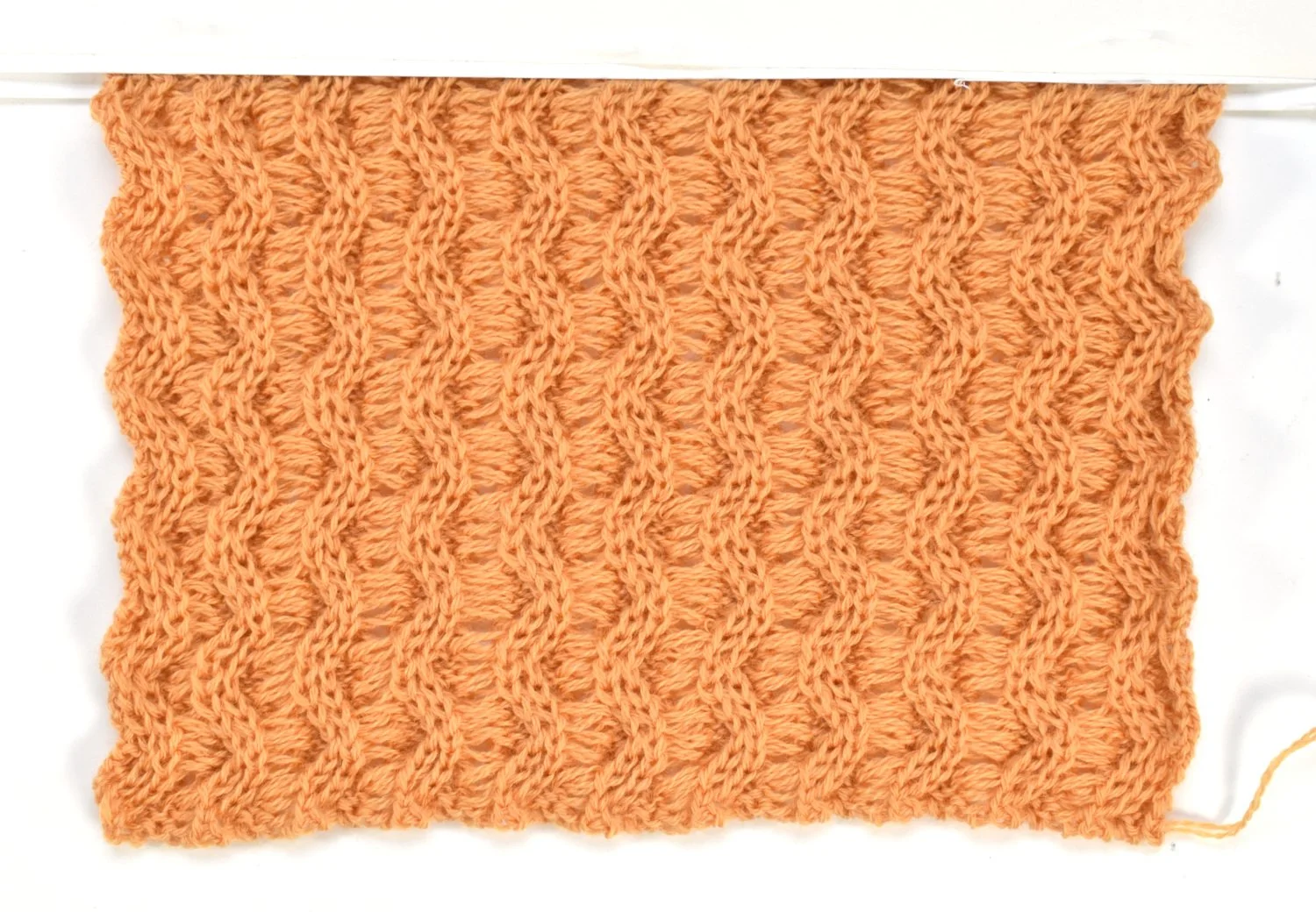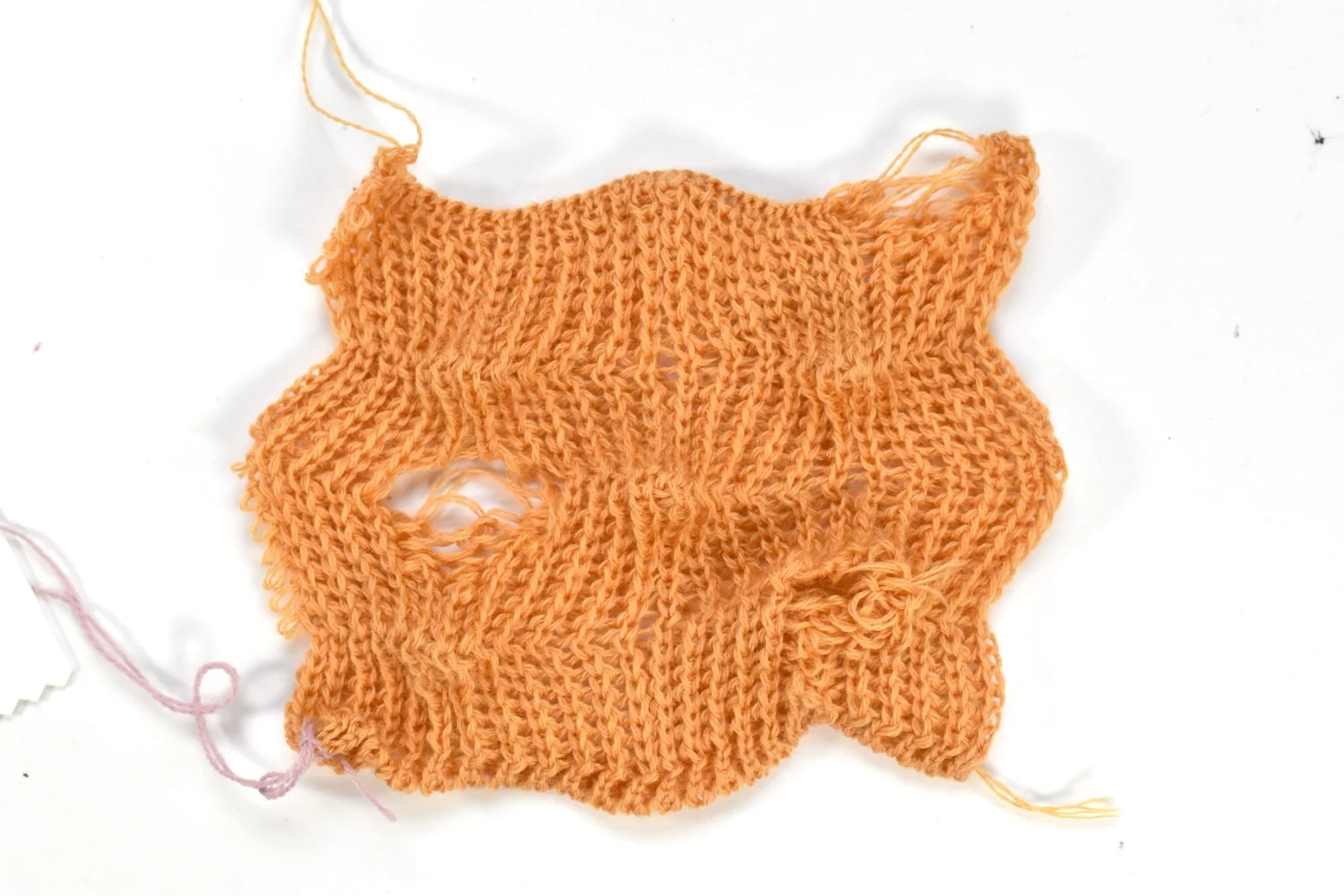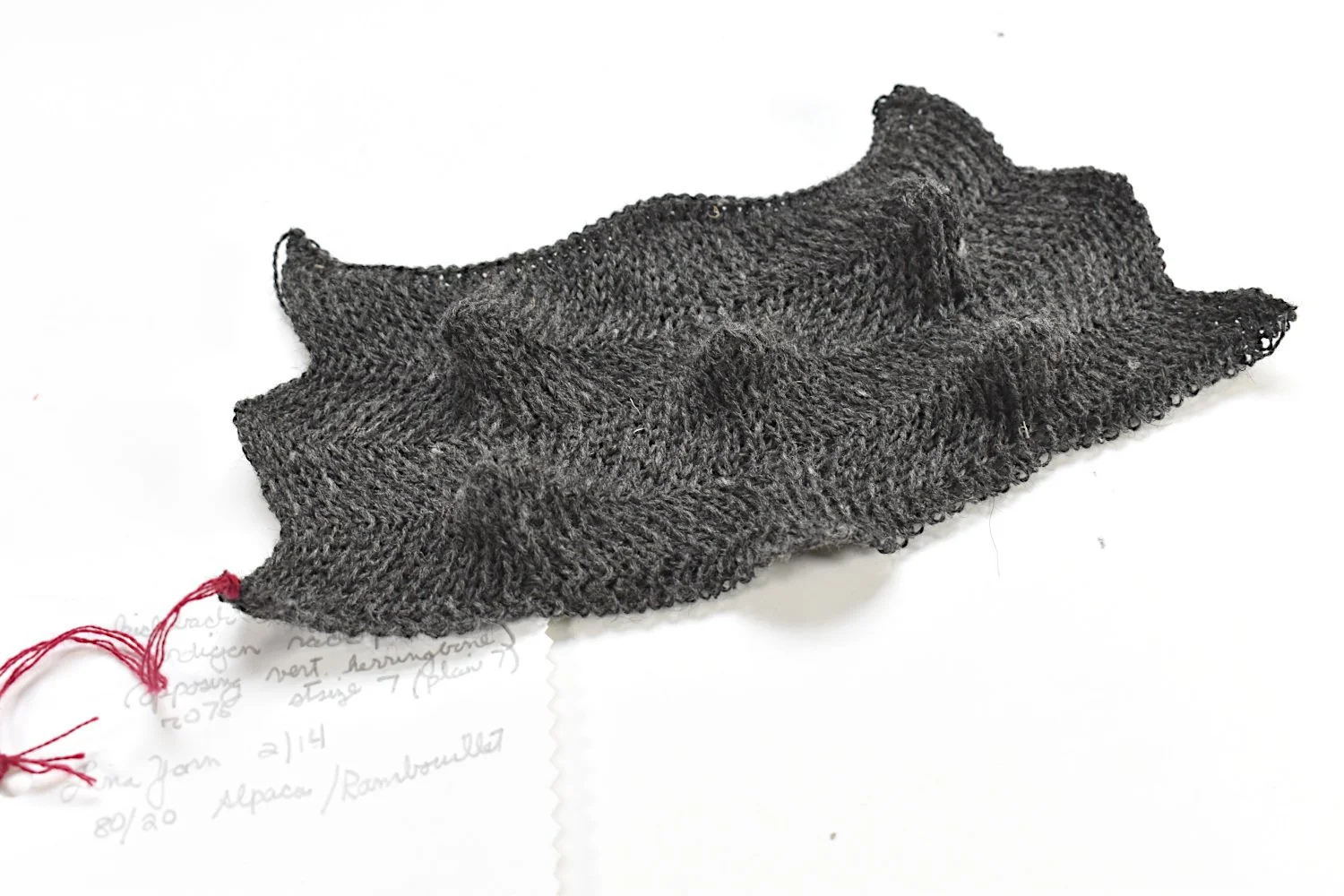Yarns for Kniterate Knitting
Finding suppliers of coned yarn for small batch production or one-off projects can sometimes be a challenge, so I’ve shared lists of coned yarn suppliers, suitable for Kniterate knitting, at the bottom of this page. I’ve used many of the yarns from the list for US and Canada, though I’ve only mentioned a few in this post. The other list, for Europe, is sourced from Kniterate knitters' experiences. If you know a great source for coned yarns in your area of the world, please share. I promise to pass the info on.
Jagger Spun, the spinner of some of my favorite yarns over the years, will be closing in early 2025. I’ve used their Maine Line and Super Lamb with every knitting machine I’ve ever owned, including the Kniterate. Every double jacquard I’ve ever knitted with the Kniterate used one or two ends of wc 2/20 Maine Line or 2 ends of the NM 2/24 Super Lamb. (See a few samples here and here.) I’ve also had smooth knitting with the wc 2/18 Zephyr wool/silk blend and wc 2/18 Merino. Jagger Spun will be missed.
What will replace this yarn for me? Another favorite, Nature's Way Merino Wool from Silk City Fibers. At 7500 yard per pound, two ends are great for double jacquard, jersey, and more.
Yarn Count and Conversions
Sometimes suppliers will use two or more different systems of yarn count (yarn thickness expressed as a number) to describe the weight of the various yarns in their product lines. This happens often in the US where one system is used for wool (wc), another for cotton (cc), and yet another for filament yarns (denier or tex). And these aren’t the only systems in use! My preference is to convert everything to either yards per pound (ypp, imperial system) or NM (metric number). I refer often to the yarn conversion chart and calculator, linked at the bottom of this page.
Settings for Wool vs Cotton
Wool is by far my favorite yarn to work with. That little bit of give, inherent in most wool yarn, allows for a greater range of workable settings, especially helpful for transfers and racking.
Though I’ve successfully transferred and racked with 100% cotton yarns, I feel that roller and stitch size have a narrower range of values that work with this less stretchy fiber. A single stitch size too small or a mere 20 off on the roller and the cotton yarn can break when racking or drop when binding off. On the other hand, I can knit wool with a less-than-ideal stitch size or roll value, need fewer adjustments to settings, and have fewer knitting issues. (The fabric or tightness of bind-off may not be what I was going for if the settings are off, but now that I’m comfortable I can easily get a sample to knit without yarn breakage or dropped stitches.) My rule of thumb when switching a stitch pattern from wool to cotton is to knit with a slightly larger stitch size. Roller value depends on the strength of the yarn and whether it’s sufficiently waxed.
Strength Matters
Yarn strength is crucial not just for the durability of the finished product, but for the knitting process itself. Strength is determined by the linear density of the yarn, ply, and fiber content. It’s an extensive topic! Here are a few factors I consider when choosing a yarn.
A stronger yarn will withstand the tension of being worked by the machine, reducing the likelihood of breakage. Waxed yarns ensure a smoother knitting process, also reducing breaks. Fortunately, many yarns for machine knitting are now sold pre-waxed. If you are purchasing directly from a producer, they may not be.
Plied yarns typically offer better strength compared to single-ply varieties, making them a more reliable choice. Most knitters I know avoid single-ply spun yarns, because when knitted, the fabrics tend to skew, especially when knitting jersey. The exception is felted wool yarn.
Why do singles skew the knitting? As I understand it, the skewing occurs because singles are twisted in one direction. Knitting on a single bed can encourage the yarn to twist more in the same direction, or it could make the yarn begin to untwist. Either one can produce an unwanted slant to the knitting.
With two-ply yarns, each ply is twisted in one direction to spin the yarn and then twisted in the other direction to ply the yarns together. This produces a balance. If the yarn is twisted too tightly, however, the yarn is unbalanced and you could end up producing a bias even when knitting a 2-ply. This is why some yarns for weaving don't work well with machine knitting. The twist is too great, so there’s an imbalance. When in doubt, always ask the supplier if the yarn is suitable for machine knitting.
When Bad Things Happen with Great Yarn
A perfect yarn for one technique might be dreadful for another. Two or three ends of Jagger Spun Super Lamb knit a variety of items nicely on the Kniterate. Here’s the Kniterate beanie knitted with 3 ends of NM 2/24 Super Lamb.
And here’s a basic racked stitch pattern using 2 ends of Super Lamb.
While the 2 ends of SuperLamb worked well for the basic racked pattern above, it failed a couple of attempts knitting a stitch pattern of opposing vertical herringbone, which required multiple kickbacks and racking.
Tweaking the settings a bit more for the opposing vertical herringbone swatch might eventually produce a successful swatch in the Super Lamb. Instead of continuing, I switched yarns.
Using similar settings I was able to produce a viable swatch the first time knitting opposing vertical herringbone with a single end of NM 2/14 alpaca/Rambouillet blend from Lina Yarn. Immediate success doesn’t always happen. The earlier bad swatches informed my settings for the Lina Yarn. Also, this Lina yarn is strong!
Working Outside the Recommended Range
For most projects, Kniterate recommends yarns between NM 6 and NM 8 or between approximately 3000 and 4000 yards per pound. For projects consisting mostly of plain jersey and basic ribs, you can work with slightly heavier yarns. The maroon and brown Kniterate beanie earlier in this post is a good example at NM 4. (The Kniterate folks knitted the original beanie with NM 3.5.) I don’t recommend using heavier yarns if you are new to Kniterate unless you are following a tested pattern.
NM 6 to NM 8 is still an ideal yarn weight for a double jacquard sweater. If the double jacquard has more than 4 colors, I recommend going with a lighter weight yarn. Knitting a double jacquard with 2 ends of wc 2/20 (NM 5.5) Maine Line from Jagger Spun produced a nice weight fabric for a jacket or a coat. I’m not sure I would try double jacquard on a Kniterate or any 7gg machine with yarn any heavier.
For multiple tucks on a needle, a lacelike look, or both the selection of lighter weight yarn is the key. A single end of Silk City Fiber’s Bambu 12, the bamboo rayon yarn used below is 6300 YPP (approx. NM 12.5). The machine needles easily hold up to 4 loops on a needle with this yarn and stitch pattern pairing.
I enjoy trying different yarns with various stitch patterns. It requires lots of testing (#experiknitting). If you don’t enjoy testing, I recommend finding the one yarn weight and fiber that works for you and developing color or textured stitch patterns based on that one favorite yarn type. There can be so much to explore with a single yarn.
Helpful Links
Coned yarn suppliers (US and Canada)
Coned yarn suppliers (UK and EU)
Abridged yarn conversion chart
Yarn conversion calculator [Crescent Woolen Mills website]
O!
If you’re a Kniterate user, you may be interested in my prerecorded Designing with Kniterate classes. (Session 1 includes an introduction to yarn count!) If you’re not an owner yet, I’d be happy to give you a virtual tour of the machine.








